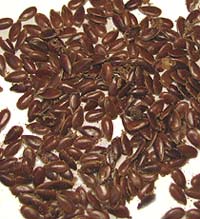So, to begin with, linseed is always good for a shiny coat SINCE it is cooked properly and served in time. I m planning to add other things as well to his nutrition, but for now, the below information are quite interesting and helpful, regarding the lineseed feeding...
Source: http://www.equi-therapy.net/equi-therapy/equine-nutrition/linseed-horse.shtml
How to feed Linseed to Horses - make linseed jelly

Linseed is highly nutritious and rich in proteins and oils. It is the small brown seed of the flax or linen plant.
Fed as a linseed jelly, cake or oil it has the benefits of improving the horse's condition and produce a glossy shine to an equine coat.
To benefit a horse or pony linseed must be cooked before it can be fed.
When raw or uncooked linseed is poisonous to horses - it contains cyanide containing compounds linustatin, linamarin and neolinustatin as well as an enzyme which liberates the poison cyanide if the linseed is fed raw.
How to prepare and cook Linseed Jelly for horses
A daily quota of 6 oz - 1 lb (200 - 450 grams ) of linseed (pre-cooked weight) for each horse is advised.
- To prepare linseed for cooking first soak overnight in cold water in an old saucepan. If you have several horses to feed you can use a boiler.
- When the linseed has been soaked add more water, if necessary, before bringing to the boil and boiling for 15 minutes to remove the poisons.
- After 15 minutes of boiling reduce the heat and simmer the linseed for 2-3 hours- until it forms a jelly. (Some people advise simmering for up to 6 hours).
- Keep a careful watch on the jelly as it is cooking, do not allow to dry out and add more water if necessary.
- Before feeding cooked linseed jelly to your horse or pony ensure that the linseed has cooled to blood temperature - otherwise it may scald you horse's mouth.
- When the mixture has cooled it will turn into a rather messy looking jelly - but most horses and ponies really enjoy it when mixed into their feed!
Remember that linseed is poisonous if it is not boiled thoroughly and it must be used the same day that it is cooked. Linseed jelly will quickly turn rancid.
Any left over linseed jelly should be very carefully disposed of where it cannot be eaten by any other animals, such as dogs or cats, in the stableyard.
Δεν υπάρχουν σχόλια:
Δημοσίευση σχολίου